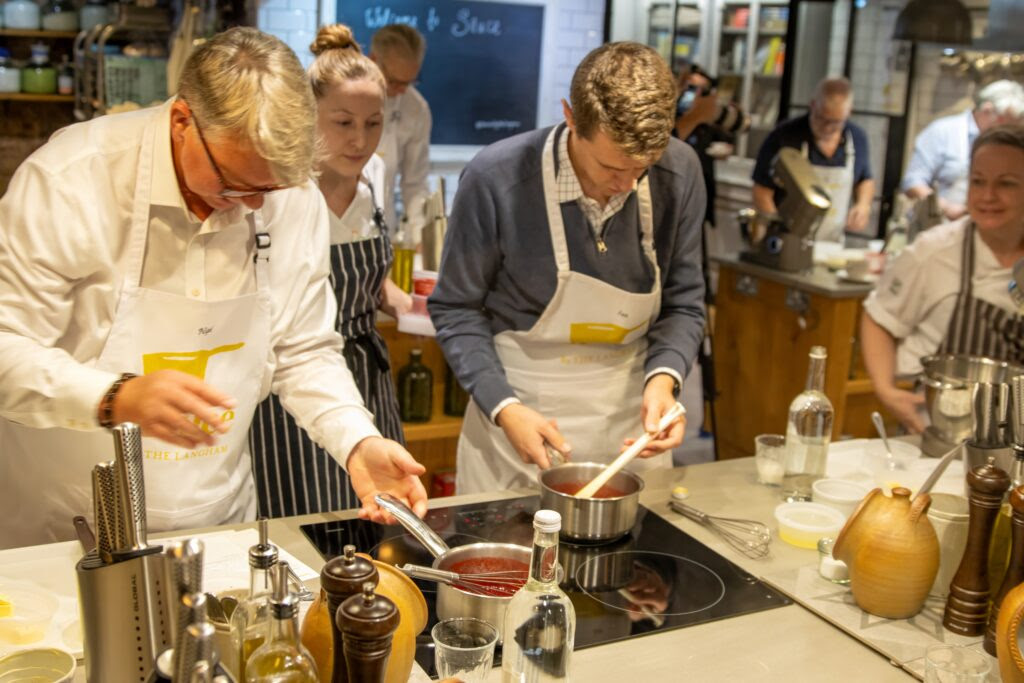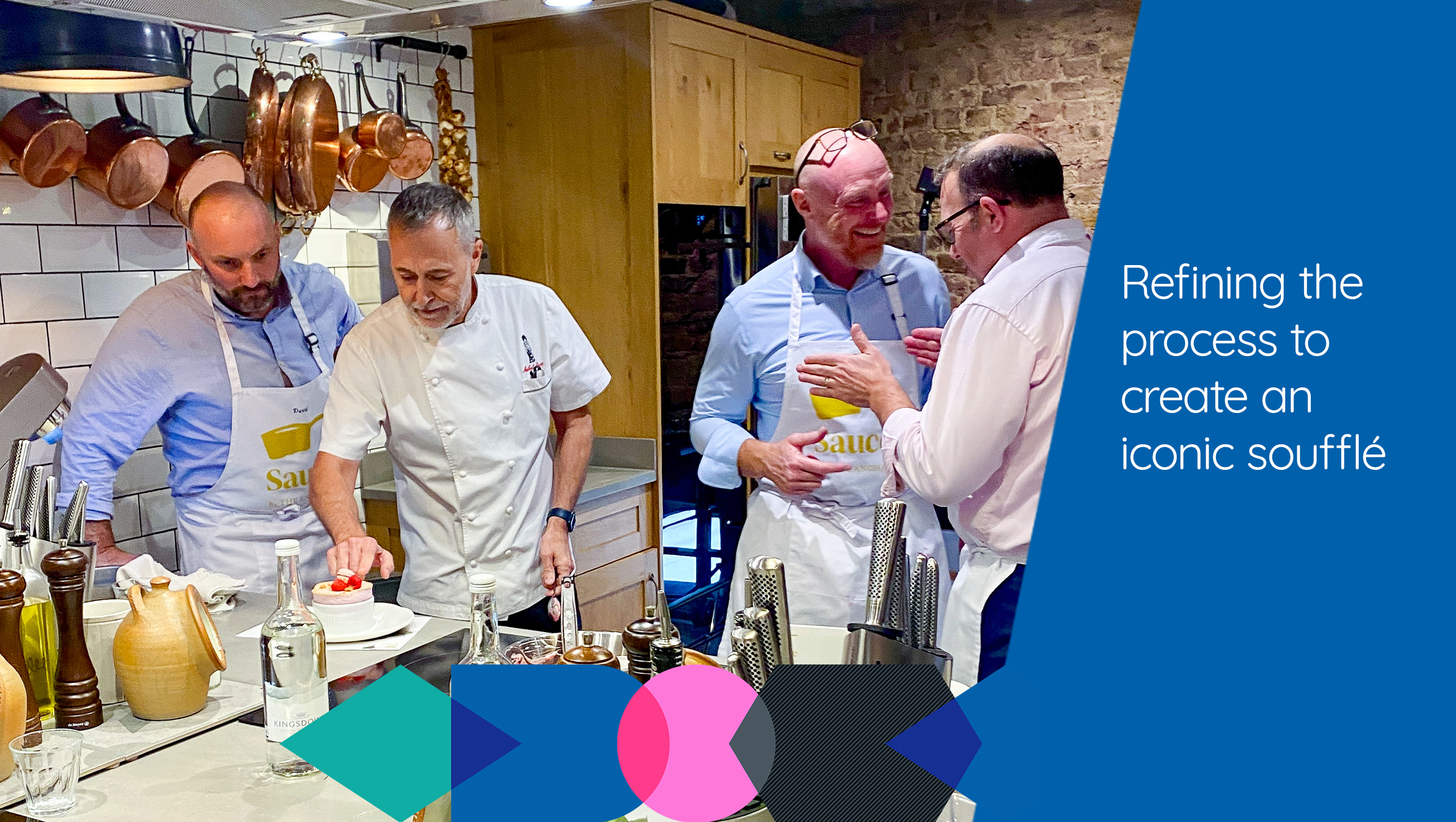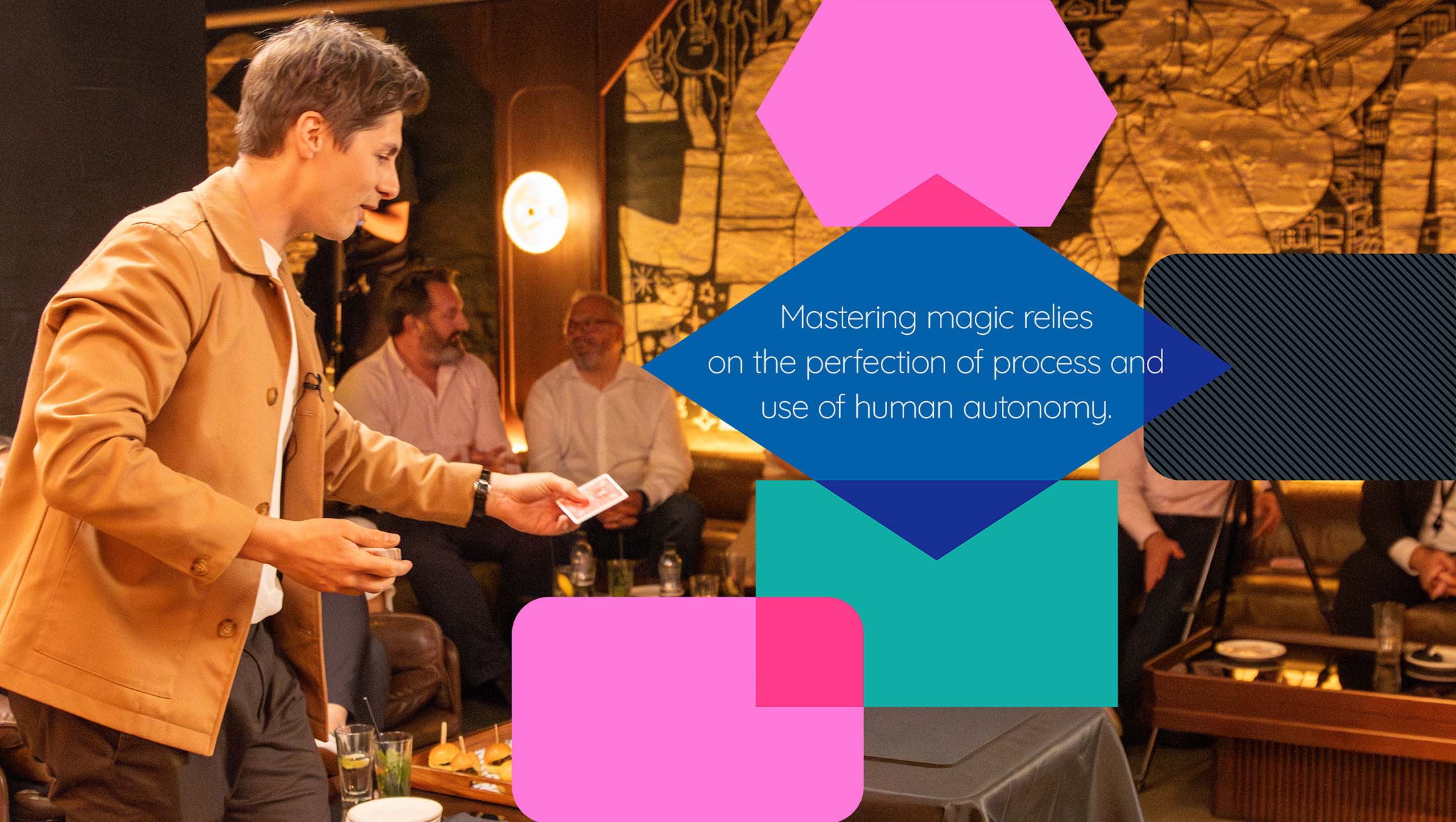 Past Event
Past EventMastering the art of process with Michel Roux Jnr
Pace believes that intelligent, well-designed processes unlock human potential for creativity, autonomy, and purpose. To highlight the power of perfecting process design, Pace invited Michelin-starred chef Michel Roux Junior to demonstrate the art of creating his iconic soufflé.
Four takeways from the event:
- Process and creativity go hand-in-hand
- Consistency is key to success
- Subtle iteration over major shifts
- Embrace change while mastering your tools
About our hosts
Tim Bretman and Michel Roux Jnr
We invited our audience of trainee chefs to make a soufflé under the watchful gaze and taste buds of Roux. Despite everyone having the same recipe and ingredients, every soufflé was different. Once all the soufflés had been tasted, Roux demonstrated his mastery and excellence when he showed the audience how it is done.
Success is defined by consistency…And consistency is only achieved by constant practice over time – a million soufflés means Michel can now add individual flair.
The venue
Sauce at The Langham Hotel




